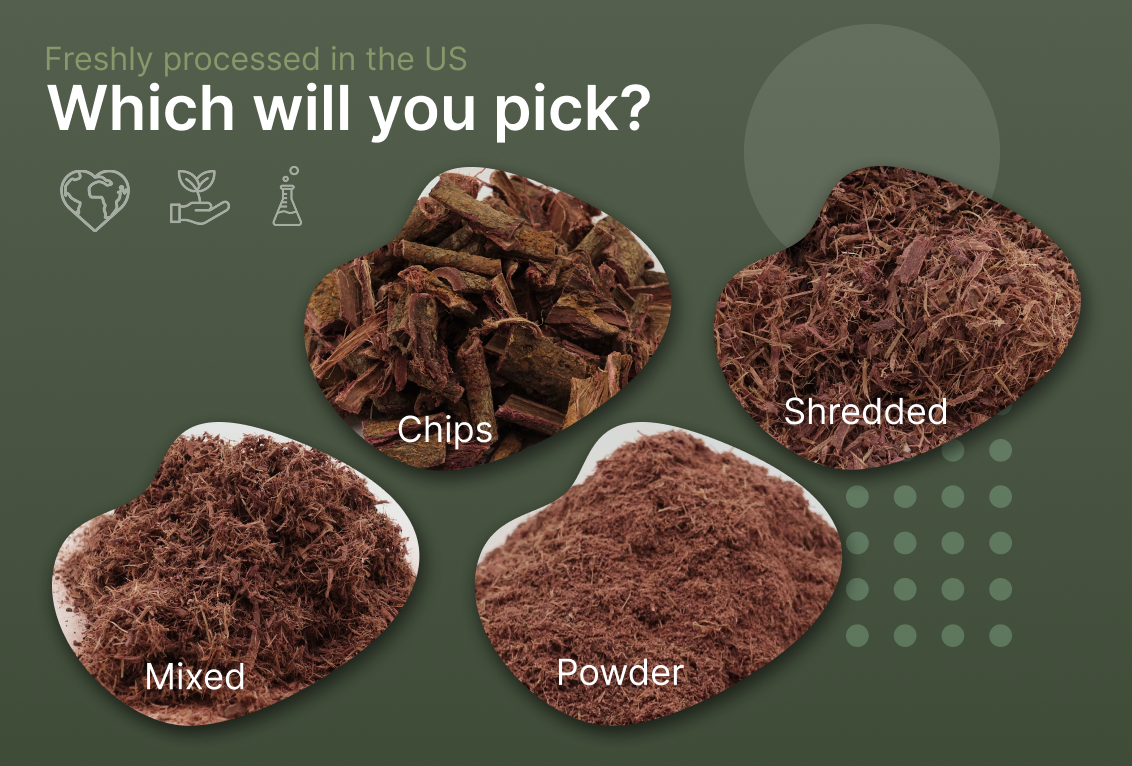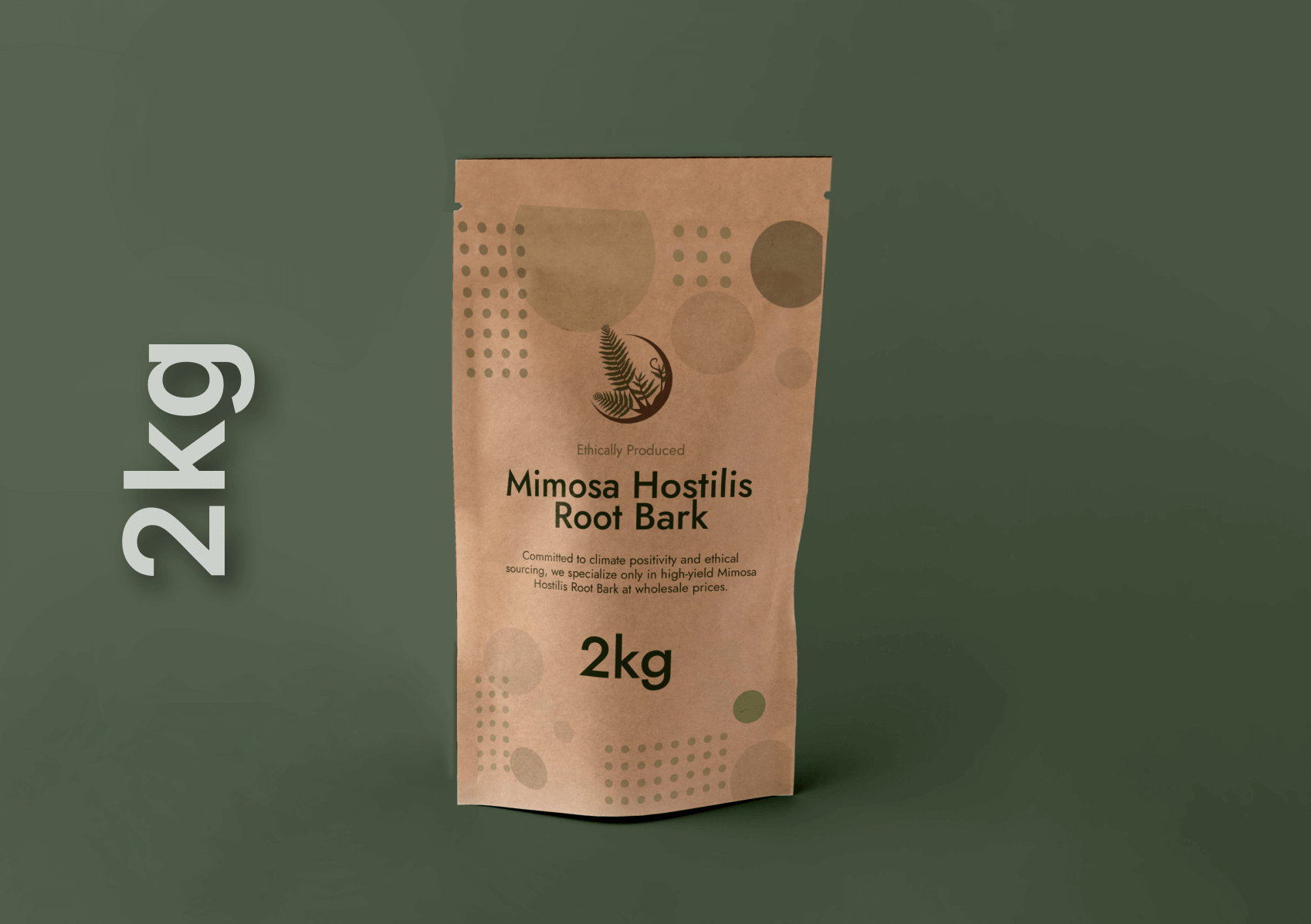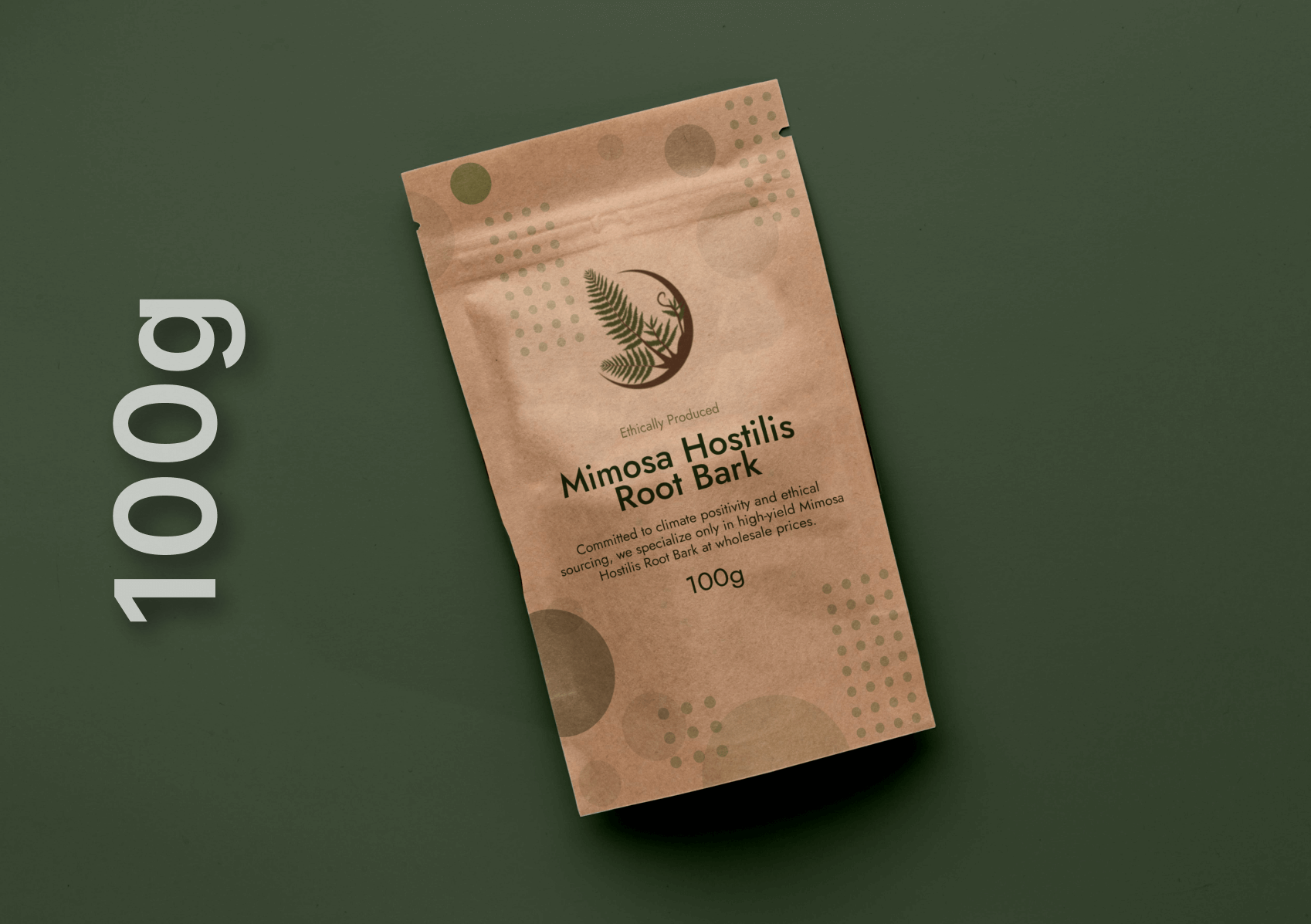Understanding Mimosa Hostilis Sustainable Harvesting: The Basics
What is Sustainable Harvesting of Mimosa Hostilis?
Sustainable harvesting of Mimosa Hostilis refers to the careful extraction of root bark that ensures the long-term survival of the Mimosa tenuiflora tree while meeting commercial and traditional demands. This practice balances ecological preservation with economic needs, supporting both the environment and local communities.
The Mimosa tenuiflora tree, native to northeastern Brazil and parts of Mexico, has remarkable regenerative properties. When harvested correctly, the tree can regrow its bark and continue thriving for decades. However, improper harvesting methods can damage or kill these valuable trees, threatening both the species and the livelihoods of those who depend on them.
The Environmental Impact of Traditional Harvesting
Traditional harvesting methods vary significantly across regions. In some areas, indigenous communities have developed time-tested techniques that allow trees to recover naturally. These methods typically involve harvesting only portions of the root bark, leaving enough material for the tree to heal and regenerate.
Unfortunately, increased commercial demand has led to more aggressive harvesting practices in some regions. Some collectors remove entire root systems or strip too much bark, severely compromising the tree’s ability to survive. This unsustainable approach threatens wild populations and disrupts local ecosystems.
Economic Pressures and Market Demands
The global market for Mimosa Hostilis has expanded significantly in recent years. Natural dye enthusiasts, skincare manufacturers, and traditional practitioners all contribute to growing demand. This increased interest creates economic opportunities for rural communities but also puts pressure on wild tree populations.
Market prices for high-quality MHRB can be substantial, sometimes reaching $50-100 per kilogram for premium inner root bark powder. These prices incentivize harvesting but can also encourage unsustainable practices if not properly managed through ethical sourcing programs.
Regulatory Framework and Legal Considerations
Different countries have varying regulations regarding Mimosa Hostilis harvesting and trade. Brazil, as the primary source country, has implemented some restrictions on export and harvesting in certain protected areas. However, enforcement can be challenging in remote rural regions where most harvesting occurs.
International buyers must understand both source country regulations and their own domestic laws. Some regions classify MHRB differently based on intended use, with natural dye and cosmetic applications typically facing fewer restrictions than other uses.

The Current Landscape of Mimosa Hostilis Harvesting
Geographic Distribution and Harvesting Regions
Mimosa tenuiflora grows naturally across several states in northeastern Brazil, including Pernambuco, Paraíba, Rio Grande do Norte, and Ceará¡. The Caatinga biome, a dry forest ecosystem, provides ideal conditions for these hardy trees. Smaller populations exist in southern Mexico, particularly in Oaxaca and Chiapas states.
Each region produces bark with slightly different characteristics. Brazilian MHRB is generally considered higher in active compounds, while Mexican varieties are often prized for traditional uses. These regional differences affect both quality and sustainability considerations.
Current Harvesting Methods and Their Impact
Modern harvesting operations range from small family enterprises to larger commercial operations. The most sustainable operations employ selective harvesting techniques that target mature trees and leave younger specimens to grow. They typically harvest only 30-40% of available root bark, allowing trees to recover over 3-5 year cycles.
Less sustainable operations may clear-cut areas or strip trees completely. These practices can devastate local populations and make recovery extremely difficult. Satellite imagery from some heavily harvested areas shows concerning levels of forest degradation.
Supply Chain Transparency Challenges
The MHRB supply chain often involves multiple intermediaries between harvesters and end consumers. Rural collectors typically sell to regional buyers, who then process and export the material through larger distributors. This complex chain makes it difficult to track the sustainability of harvesting practices.
Many international suppliers cannot definitively verify their sourcing methods or provide detailed information about harvesting practices. This lack of transparency makes it challenging for conscious consumers to make informed purchasing decisions.
Price Pressures and Quality Considerations
Market pressures often favor quantity over sustainability. Buyers seeking the lowest prices may inadvertently support unsustainable harvesting practices. However, a growing segment of consumers is willing to pay premium prices for ethically sourced materials.
Quality differences between sustainably and unsustainably harvested bark are not always immediately apparent. Both can produce similar colors for dyeing or similar cosmetic effects. This makes education about sourcing practices essential for promoting sustainable consumption.
Exploring Sustainable MHRB Practices: Applications and Implications
Ethical Sourcing Standards and Certifications
Several organizations are developing certification standards for ethically sourced botanical materials, including MHRB. These standards typically require documentation of harvesting practices, fair compensation for local communities, and evidence of forest conservation efforts.
The Sustainable Botanicals Program, launched by industry groups, provides guidelines for responsible sourcing. Certified suppliers must demonstrate sustainable harvesting practices, community engagement, and long-term conservation commitments. While not yet widely adopted for MHRB, these frameworks provide models for future development.
Fair trade principles are also being applied to MHRB sourcing. Fair trade certification ensures that local communities receive fair compensation for their work and that environmental standards are maintained. Several pioneering companies have begun implementing fair trade MHRB sourcing programs.
Community-Based Conservation Initiatives
Some of the most successful sustainable harvesting programs are community-led initiatives. Local communities have strong incentives to preserve their forest resources for long-term economic benefits. These programs often combine traditional knowledge with modern conservation techniques.
The Caatinga Conservation Project in Brazil works with local communities to develop sustainable MHRB harvesting protocols. Participating communities receive training in selective harvesting techniques, tree propagation, and business development. Early results show both improved forest health and increased community income.
Similar initiatives in Mexico focus on indigenous communities that have traditionally used Mimosa tenuiflora. These programs emphasize cultural preservation alongside environmental conservation, recognizing that traditional knowledge systems often contain valuable sustainability practices.
Cultivation and Domestication Efforts
Cultivating Mimosa tenuiflora could significantly reduce pressure on wild populations. Several research institutions and private companies are developing cultivation techniques for commercial production. These efforts face challenges including slow growth rates, specific soil requirements, and the need to maintain chemical profiles similar to wild-harvested material.
Successful cultivation programs typically require 5-7 years before first harvest, with full production capacity reached after 10-12 years. This long timeline requires significant upfront investment but can provide sustainable long-term supply. Some operations are experimenting with agroforestry approaches that integrate Mimosa cultivation with other crops.
Seed collection and propagation programs are essential for cultivation success. Wild genetic diversity must be preserved in cultivated populations to maintain the full range of beneficial compounds. Several botanical gardens and research institutions maintain seed banks for this purpose.
Practical Guidelines for Conscious Consumers
Conscious consumers can significantly impact sustainability by making informed purchasing decisions. When buying MHRB, look for suppliers who provide detailed information about their sourcing practices. Reputable suppliers should be able to explain where their material comes from and how it was harvested.
Key questions to ask suppliers include:
- Can you provide specific information about harvesting locations and methods?
- Do you work directly with local communities or through intermediaries?
- What percentage of root bark is harvested from each tree?
- How long do you allow trees to recover between harvesting cycles?
- Do you support any reforestation or conservation efforts?
Price can be an indicator of sustainability, though not always definitively. Extremely low prices often indicate unsustainable harvesting practices, as sustainable operations typically have higher costs. However, high prices don’t guarantee ethical sourcing without proper documentation.
Consider purchasing smaller quantities more frequently rather than large bulk orders. This reduces pressure on suppliers to maintain large inventories and allows for better quality control. It also enables you to switch suppliers if better ethical options become available.
Technology and Innovation in Sustainable Harvesting
Modern technology is being applied to improve sustainability monitoring and harvesting efficiency. GPS mapping allows for precise tracking of harvested trees and recovery cycles. Drone surveillance can monitor forest health and detect unsustainable harvesting practices.
Mobile applications are being developed to help local harvesters track their activities and optimize sustainability. These apps can record harvest locations, quantities, and timing to ensure proper rotation cycles. Some include payment systems that reward sustainable practices with premium prices.
Laboratory analysis techniques are improving quality assessment and origin verification. Chemical fingerprinting can sometimes identify the geographic origin of MHRB samples, helping to verify sustainability claims. These techniques are becoming more accessible and cost-effective.
Future Trends in Sustainable MHRB Markets
Market trends strongly favor sustainable and ethically sourced natural products. Consumer awareness of environmental and social issues continues to grow, creating demand for responsibly sourced MHRB. This trend is particularly strong in developed markets where consumers have more purchasing power.
Corporate sustainability commitments are driving demand for certified sustainable botanicals. Companies in cosmetics, textiles, and other industries are setting targets for responsible sourcing. This creates opportunities for premium pricing of sustainably harvested MHRB.
Blockchain technology may soon enable complete supply chain transparency for MHRB products. Blockchain systems can track materials from harvest through processing to final sale, providing consumers with verified information about sourcing practices.
Investment in cultivation and processing infrastructure is increasing in source countries. Government programs and international development funds are supporting sustainable MHRB industry development. These investments should improve both sustainability and supply chain transparency over time.
Measuring and Monitoring Sustainability Impact
Effective sustainability programs require robust monitoring and measurement systems. Key indicators include forest cover in harvesting areas, tree population health, recovery rates after harvesting, and community economic benefits. Regular monitoring allows for adaptive management and continuous improvement.
Satellite imagery provides cost-effective monitoring of large harvesting areas. Time-series analysis can track changes in forest cover and identify areas of concern. Ground-truthing with local surveys provides detailed information about tree health and harvesting practices.
Community surveys assess the social and economic impacts of sustainable harvesting programs. These surveys track income changes, employment opportunities, and community attitudes toward conservation. Positive community outcomes are essential for long-term sustainability program success.
Chemical analysis of harvested material can indicate sustainability impacts. Stressed trees may produce different chemical profiles than healthy specimens. Monitoring these changes helps identify unsustainable harvesting before severe damage occurs.
Building Sustainable Supply Partnerships
Long-term sustainability requires strong partnerships between all supply chain participants. International buyers, local suppliers, harvesting communities, and conservation organizations must work together. These partnerships take time to develop but create the foundation for lasting sustainability.
Successful partnerships typically include multi-year purchasing agreements that provide income security for local communities. These agreements should include sustainability requirements and regular monitoring. Premium pricing for certified sustainable material provides economic incentives for conservation.
Capacity building programs help local communities develop the skills needed for sustainable harvesting and business management. Training programs might cover tree identification, selective harvesting techniques, quality processing, and financial management.
Research collaborations between international institutions and local organizations advance scientific understanding of sustainable harvesting. These collaborations can develop improved techniques and provide ongoing monitoring of ecosystem health.
Conclusion
Sustainable harvesting of Mimosa Hostilis represents both a significant challenge and an important opportunity. The growing global demand for this valuable botanical creates economic opportunities for rural communities in source countries while potentially threatening the long-term survival of wild populations.
Conscious consumers play a crucial role in promoting sustainability through their purchasing decisions. By choosing suppliers who demonstrate genuine commitment to ethical sourcing and community development, consumers can drive positive change throughout the supply chain. This requires asking difficult questions about sourcing practices and sometimes paying premium prices for verified sustainable products.
The future of sustainable MHRB harvesting depends on collaboration between all stakeholders. International buyers must prioritize sustainability over short-term cost savings. Local communities need support to develop sustainable harvesting techniques and alternative income sources. Governments and NGOs must provide policy frameworks and technical assistance.
Technology and innovation offer promising tools for improving sustainability monitoring and supply chain transparency. From satellite monitoring to blockchain tracking systems, these technologies can provide the data needed for effective sustainability programs. However, technology alone cannot solve sustainability challenges without human commitment and institutional support.
Cultivation and domestication efforts show promise for reducing pressure on wild populations, but these programs require significant time and investment to achieve commercial viability. In the meantime, improved wild harvesting practices remain essential for conservation.
The sustainable harvesting of Mimosa Hostilis is achievable with proper planning, community engagement, and market support. Success requires recognizing that environmental conservation and economic development can be mutually supportive goals. By working together, all stakeholders can ensure that this valuable botanical resource remains available for future generations while providing sustainable livelihoods for the communities that depend on it.
Frequently Asked Questions
What does sustainable harvesting of mimosa hostilis mean?
How can I tell if my mimosa hostilis is sustainably sourced?
Why is sustainable sourcing of mimosa hostilis important?
What should I look for when buying sustainably harvested mimosa hostilis?
How does unsustainable harvesting affect mimosa hostilis trees?




